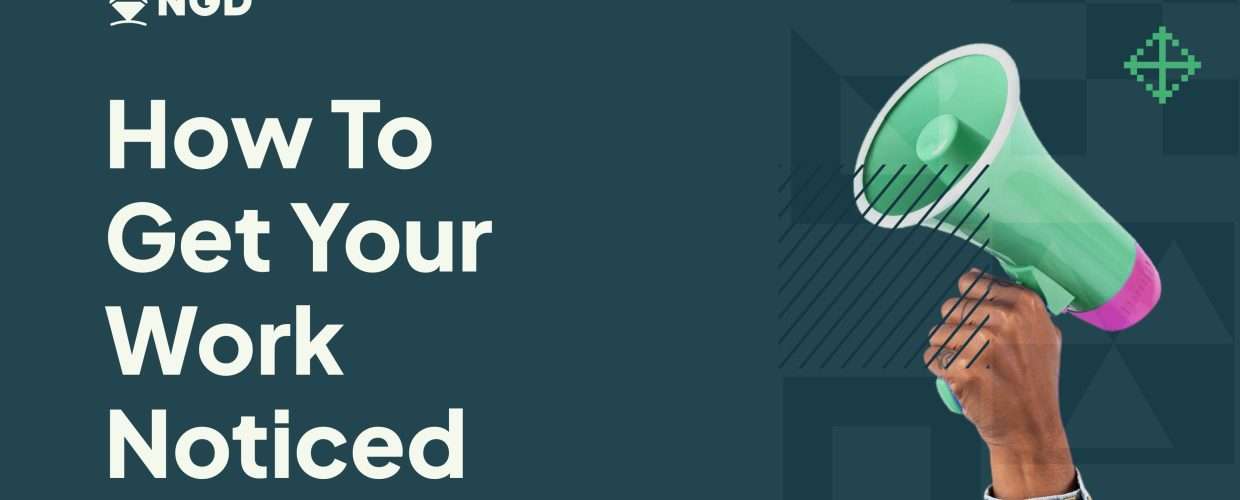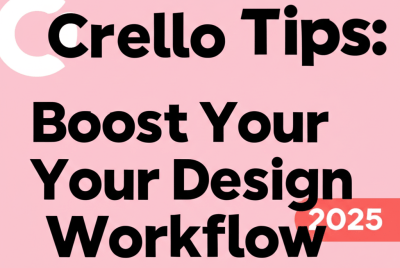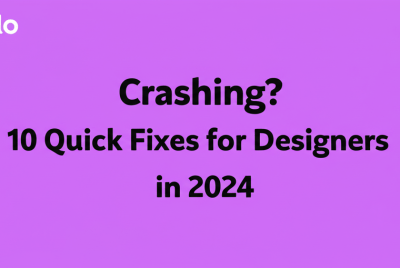In countries like Nigeria, visual creatives number around 400,000 according to reports on the state of the creative market in Nigeria. Each member of this market is hungry for success, and many argue there’s a proliferation of talents in the job market.
Besides the ease of hiring designers in places like Lagos, there’s access to technology tools enabling members equal access to growth materials at affordable costs.
Think how easy it is to watch a Photoshop tutorial for pros and beginners and now imagine every single member of the creative market has access to the same.
Combine this ease of learning with social media outlets for amplifying reach, and it’s no wonder creatives scream, “How do I get my work noticed? How do I get the attention it deserves in a world where AI tools compete with proficient designers or the best laptops for illustrators or graphic designers are beyond your reach?”
The simple answer is this: while tools remain easily accessible to everyone, their uses vary, and this determines the outcomes of these tools. In this post, we outline the best ways to use popular tools for building competence that attracts attention. Our guide is really all you need to know to stand out as a designer, complete with action steps too.
Ready? Let’s dig in.
4 Ways to Get Your Work Noticed
- Work out an angle
- Learn the necessary ropes
- Show your work strategically
- Utilize ads
Our steps run into one another and are complete with actionable tips. Read to the end for a bonus.
1. How to Stand Out: Work from Depth
Work from a personal angle as opposed to trends to stand out in a sea of designers.
Designers want to figure out what their unique angles are, their passions, and problems which trigger the creative spark in them. Essentially, you won’t stand out in a sea of creatives by doing the same work as everyone else.
Malik Afegbua of NGDX23 drops a key nugget in his work, which won global renown.
He discusses how his unique angle of creating images depicting rich Africans in gorgeous attires to oppose inferior ones on stock libraries got noticed and earned him various engagements around the world.
Mike utilized AI for content creation to achieve this, the same tool every designer has but not every designer uses for unique takes on society. Similarly, Juliet won a call-out by presidential aspirant Peter Obi for her illustration on a better Nigeria.
It’s not about reinventing the world but engaging with projects that speak to you.
How to do this:
- Identify Your Passions and Interests: Take time to think about what excites you, what hobbies you enjoy, and what topics you are passionate about. Consider your personal experiences and how they could inspire your work.
- Mind Mapping: Create a mind map to visually organize your thoughts and ideas. Start with a central theme and branch out to related concepts and potential project ideas.
- Stay Informed: Follow design blogs, news outlets, and industry leaders to stay updated on current trends and issues. Identify gaps or problems that you can address through your work.
- Social Media and Online Communities: Engage with communities on platforms like NGD,Youdesign,Behance, Dribbble, Reddit, and Twitter. Look for discussions and projects that resonate with you and spark your creativity.
Tools you need: Trello, Asana, Evernote, Mind mapping apps.
2. Learn the Right Skills to Get Noticed
How to get your work noticed at work or from home first requires a mastery of skills demanded by your career as skill gaps while aiming for recognition mean you’re missing the point.
Want to get noticed in the illustration field? Then great illustration skills are a must. This includes learning which computers are ideal for illustrators or which ones are reasonably priced and honing your illustrator skills.
Stay consistent. Master the skills.
How to do this
- Research Industry Requirements: Look into job descriptions and industry standards for your specific design field. Make a list of commonly required skills and tools.
- Seek Feedback: Ask mentors or professionals in the field about essential skills.
Join design forums and communities to understand current demands. - Develop Core Design Skills: Take online or offline courses from physical masterclasses to virtual ones focusing on design principles, typography, color theory, and layout. Master popular design software like Adobe Creative Suite (Photoshop, Illustrator, InDesign), Sketch, or Figma.
- Improve Soft Skills: Work on your verbal and written communication to effectively convey your ideas. Practice presenting your work and giving/receiving constructive feedback.
Tools you need: NGD community, NGD Academy, Youtube,Adobe Creative tools (e.g., Photoshop).
3. Put Your Work Out There
Get your work into places built to encourage visibility and engagement for creative work.
Designers often introverted to the public, face anxiety issues about how their work is perceived, making it difficult to put work out there. But work hidden stays hidden; work without criticism or admiration is unfulfilled.
Putting your work out there involves more than just a single post on social media.
Action steps:
- Think Platform and Why: Platforms don’t just mean Facebook, etc., but in reality platforms match personality types. Love the 10-second quick speech or enjoy dancing with captions? Then Instagram/TikTok is your jam. Want to write your heart out, stay faceless, and avoid dancing? Then LinkedIn is your best bet.
- Think More About Your Work: There’s more to putting work out there than just a post. This involves clearly documenting parts related to work, such as inspiration, process, and lessons learned pre- and post-work. Your illustration about the 10-day rage protest has some back stories, your motion design video has a reason behind its creation.
Break this reason into five different slices suitable for the platform you’ve chosen (e.g., videos, audio, or stills). Upload to give more depth about your work. - Organize Weekly Content: Utilize ChatGPT for organizing content around your inspirations, processes, and learning into periodic content you can upload at a go. This involves feeding ChatGPT your inspiration, processes, and learning. Try a simple prompt like “break these into five different content pieces for the week.”
- Publish in right places: Publish works on places built for visibility and sharing of creative works. Artworks on social media are great for publicity, but if you want to get hired (e.g., as a freelancer looking to land your first client), then you might want your works on places your dream clients notice it. Ensure where you upload work (e.g., Behance, Dribbble) has features for calling out your work, just like Youdesign with its coming soon feature spotlighting designers clients can work with.
Tools you need: Evernote, social media, Youdesign, ChatGPT.
4. Run Ads
Advertisement engines exist to amplify work across targeted sections (e.g., audiences, locations, and demography). These engines exist across all platforms, from Facebook, Instagram, Twitter, to Google.
It might sound like a far cry to talk ads where designers are concerned, but ads are a necessary tool for graphic designers seeking to reach wider audiences and skip the organic growth phase.
Ads do involve their own learning curve, and you can learn about them in our upcoming masterclass for graphic designers.
Action steps:
- Decide Your Favorite Platform: From LinkedIn to Reddit, each platform allows for one sponsorship or another.
- Pick According to Cost: Facebook is the most affordable ad engine, allowing a minimum of N500 (less than $1) for an ad, meaning N3500 per week is all you need to amplify your reach beyond the normal. Instagram tends to be higher, and Google ads rank as the top most expensive. Pick your platform according to your need (e.g., audiences and budget).
- Learn the Basics: Ads require hands-on learning to get things right. The budget isn’t the key, but your fine-tuning is. This fine-tuning allows you to reach more people or fewer, reach desired audiences, and achieve your goals. We recommend trying out this quick essential on Facebook ads for graphic designers.
Tools you need: Ad resources.
How to Get Your Work Noticed as a Designer
Artists often desire attention because it’s closely tied to validation, meaning your endeavor goes beyond economic ones but includes an innate desire for engagement with your creations.
Think Pablo Picasso? Creator of 2000+ unique pieces in 70 years of his life. Each one unique in its own way. His driving endeavor involved engagement received from the public as criticism and sales (Pablo amassed $500 million by the end of his career).
In 2024, there are several ways to get your work noticed as a designer or creative professional. We’ve outlined a systematic approach to getting your work recognized or getting hired. Our actionable guide shows you how. Bonus tip: click here to get this post in a handy PDF.
Want some more resources to step things up a little?
- LinkedIn for graphic designers: your sure road to 1k impressions for free
- Podcast for designers: the world is waiting
- Social media for graphic designers : conquer the unknown in 2024
Skills to take along the way:
- Work from a unique angle
- Learn the skills
- Put your work out there
- Get assist from ads
Enjoyed this read? Explore more valuable insights here.


